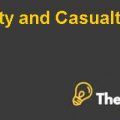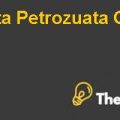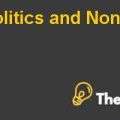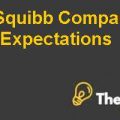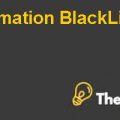
Summary
The purpose of this research paper is to detect and predict the accounting irregularities by developing and testing risk proxies. For the analysis, the commercial risk measures that includes Accounting and Governance Risk (AGR) and Accounting Risk (AR) are compared with the Academic Risk Measures in order to identify which measure from the available measure is best to detect and predict the misreporting of the financial irregularities that result in the enforcement actions of Securities and Exchange Commission, egregious financial restatements and shareholder accounting lawsuits related to the accounting regularities. The Academic Risk Measures include working capital accruals, M-score, F-score, accruals quality measure, the modified-Jones model along with unexpected audit fee measure. The head to head comparison of each Academic Risk Measures with commercially developed risk measures in order to identify which available measure has the maximum capability to detect and predict accounting regularities. The sample size of the data based on the set of the firms in Compustat from the year 1995 to 2008 and data for the study was gathered from the sources that include Center for Research on Security Prices (CRSP), Audit Analytics and Audit Integrity.
The model that was applied to test the detective and predictive ability of the measures was two sets of 36 multivariate regressions. This means that 6 comparison between each Accounting and Governance Risk along with Accounting risk measure and for each of the Academic Risk Measure with the different dependent variables that could be measured at two different times in the model. The dependent variables in the test capture the periods during which the financial statements were misstated by the companies rather than the periods during which financial misstatements were announced. Every comparison was conducted for all the firms’ observations to maximize the power of the tests that could be applied in the both risk measures and to provide the maximum external validity for each test.
The results of the study concluded that the commercially developed risk measures are more useful as proxies for identifying the risk of the accounting regularities as compared to the Academic Risk Measures. Secondly, the AGR risk measure performs well in comparison with the Academic Risk Measures and statistically outperforms Academic Risk Measures in every applied test. The results also showed that Accounting Risk (AR) measure also performs better as compared to the Academic Risk Measures. In addition to this, the risk measures that perform best from the Academic Risk Measures include accrual estimation error (DD) and Unexplained Audit Fee (UAF). One advantage that Academic Risk Measures had over commercially developed risk measures which examined during the research was that the research knows all of the inputs to the Academic Risk Measures as compared to the commercially developed risk measures that are proprietary by nature and incorporates broader sets of input. The likelihood that any individual company commits deliberate misstatements that result in the irregularities of the financial statements is quite small. The research provides the evidence that commercially developed risk measures best detect and predict the misreporting of the financial irregularities as compared to the Academic Risk Measures.
...................
This is just a sample partial case solution. Please place the order on the website to order your own originally done case solution.

